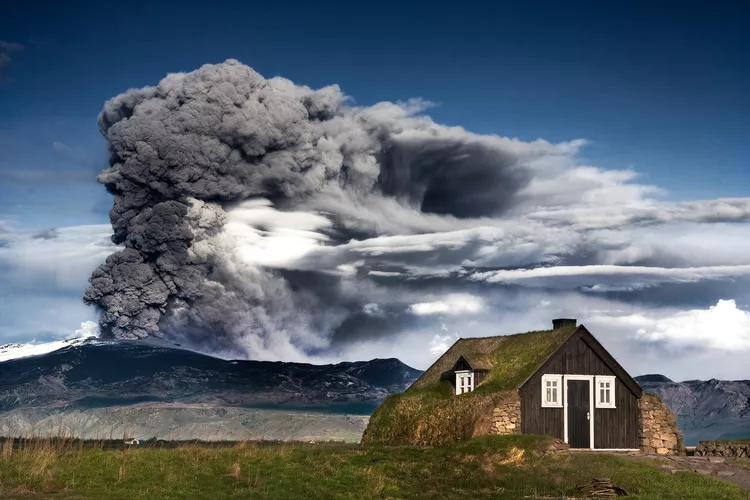Summary
Eyjafjallajökull is Iceland’s famous volcano with the long name that can be very difficult to pronounce. It is located near the south shore between Mt. Hekla and Mt. Katla, two active volcanoes. Also an active volcano, Eyjafjallajökull is completely covered in an ice cap that feeds to several outlet glaciers. At its highest point, the volcano stands 5,417 feet tall, and the ice cap covers nearly 40 square miles. The crater is about two miles in diameter, is open to the north, and has three peaks along the crater rim. Eyjafjallajökull has erupted frequently, with the most recent activity being in 2010.
Meaning and Pronunciation
The name Eyjafjallajökull may sound complicated, but its meaning is simple and can be broken down into three parts: “Eyja” means island, “fjalla” means mountains, and “jökull” means glacier. Therefore, when put together, Eyjafjallajökull translates to “glacier on island mountains.”
Although the translation isn’t that challenging, pronouncing the name of this volcano is quite difficult due to the complexity of Icelandic. However, by repeating the syllables of the word, it should only take you a few minutes to pronounce Eyjafjallajökull better than most. Say AY-yah-fyad-layer-kuh-tel to learn the syllables of “Eyjafjallajökull,” and repeat several times until you have mastered it.
The 2010 Volcanic Eruption
Whether you were privy to the news reports on Eyjafjallajökull’s activity between March and August of 2010 or not, it is easy to imagine the foreign news reporters mispronouncing the Icelandic volcano’s name. Nevertheless, the story was significant. After being dormant for more than 180 years, Eyjafjallajökull began emitting molten lava into an uninhabited area of southwest Iceland. Fortunately, after roughly a month of inactivity, the volcano erupted again, this time from the center of the glacier, causing a flood and requiring the evacuation of 800 people. This eruption also spread ash into the atmosphere, causing air-travel disruption for nearly a week in northwest Europe. Consequently, 20 countries closed their airspace to commercial jet traffic, affecting nearly 10 million travelers, marking the largest air travel disruption since WWII. The ash remained a problem for air travel for the following month, continuing to interfere with flight schedules.
Toward the beginning of June, another crater opened and began spewing small quantities of volcanic ash. Eyjafjallajökull was monitored for the next few months, and by August, it was considered dormant. Previous volcanic eruptions of Eyjafjallajökull occurred in 920, 1612, 1821, and 1823.
The Type of Volcano
Eyjafjallajökull is classified as a stratovolcano, which is the most common type of volcano. A stratovolcano is built by layers of hardened lava, tephra, pumice, and volcanic ash. Therefore, it is the glacier on top that makes the Eyjafjallajökull eruptions so explosive and full of ash. Eyjafjallajökull is part of the chain of volcanoes that lies across Iceland and is believed to be connected to Katla, a larger and more powerful volcano in the chain. Consequently, when Eyjafjallajökull erupts, eruptions from Katla often follow.




